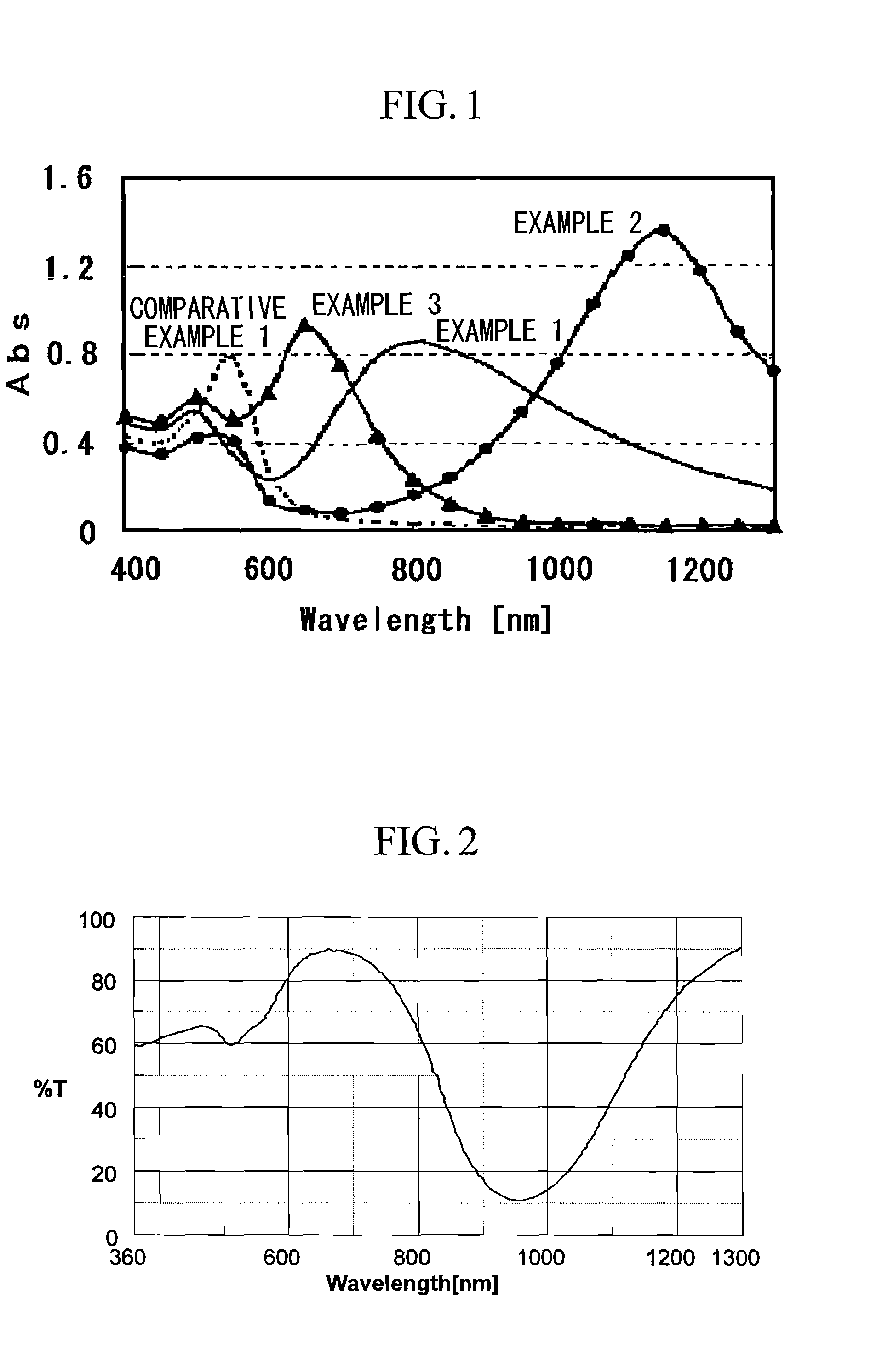Method for Manufacturing Metal Fine Particles, Metal Fine Particles Manufactured Thereby, and Composition, Light Absorbing Material and Applied Products Containing the Same
a metal fine particle and metal nanorod technology, applied in the direction of inorganic chemistry, inks, crystal growth process, etc., can solve the problems of unsuitable mass production, difficult to achieve, and difficult to achieve the effect of reducing the number of rods
- Summary
- Abstract
- Description
- Claims
- Application Information
AI Technical Summary
Benefits of technology
Problems solved by technology
Method used
Image
Examples
example 1
[0079] 0.05 ml of triethylamine (pKa=10.7) was added to, and dissolved in, 10 ml of a 0.08 mol / l aqueous solution of hexadecyltrimethylammonium bromide (CT16AB). 0.6 ml of a 0.01 mol / l aqueous solution of silver nitrate was then added as an aspect ratio regulating agent. To the resulting aqueous solution was added 0.8 ml of a 0.024 mol / l aqueous solution of chloroauric acid, immediately followed by 0.2 ml of acetone, and the resulting mixture was held at 30° C. for 4 hours.
[0080] As a result, gold nanorods with a minor axis length of approximately 4 nm, a major axis length of approximately 20 nm, an aspect ratio of approximately 5, and an absorption wavelength peak in the vicinity of 810 nm were obtained.
example 2
[0081] 0.10 ml of 2,2′,2″-nitrilotriethanol (pKa=7.8) was added to, and dissolved in, 10 ml of a 0.56 mol / l aqueous solution of hexadecyltrimethylammonium bromide (CT16AB). 0.42 ml of a 0.01 mol / l aqueous solution of silver nitrate was then added. To the resulting aqueous solution was added 0.8 ml of a 0.024 mol / l aqueous solution of chloroauric acid, immediately followed by 0.2 ml of acetone, and the resulting mixture was held at 30° C. for 48 hours.
[0082] As a result, gold nanorods with a minor axis length of approximately 8 nm, a major axis length of approximately 88 nm, an aspect ratio of approximately 11, and an absorption wavelength peak in the vicinity of 1150 nm were obtained.
example 3
[0083] 0.05 ml of triethylamine (pKa=10.7) was added to, and dissolved in, 10 ml of a 0.08 mol / l aqueous solution of hexadecyltrimethylammonium bromide (CT16AB). 0.6 ml of a 0.01 mol / l aqueous solution of silver nitrate was then added. To the resulting aqueous solution was added 0.8 ml of a 0.024 mol / l aqueous solution of chloroauric acid. At this point, a different procedure from the examples 1 and 2 was used in that no acetone was added. The resulting mixture was held at 30° C. for 4 hours.
[0084] As a result, gold nanorods with a minor axis length of approximately 3.4 nm, a major axis length of approximately 6.8 nm, an aspect ratio of approximately 2, and an absorption wavelength peak in the vicinity of 658 nm were obtained.
PUM
| Property | Measurement | Unit |
|---|---|---|
| aspect ratio | aaaaa | aaaaa |
| diameter | aaaaa | aaaaa |
| pKa | aaaaa | aaaaa |
Abstract
Description
Claims
Application Information
 Login to View More
Login to View More - R&D
- Intellectual Property
- Life Sciences
- Materials
- Tech Scout
- Unparalleled Data Quality
- Higher Quality Content
- 60% Fewer Hallucinations
Browse by: Latest US Patents, China's latest patents, Technical Efficacy Thesaurus, Application Domain, Technology Topic, Popular Technical Reports.
© 2025 PatSnap. All rights reserved.Legal|Privacy policy|Modern Slavery Act Transparency Statement|Sitemap|About US| Contact US: help@patsnap.com

